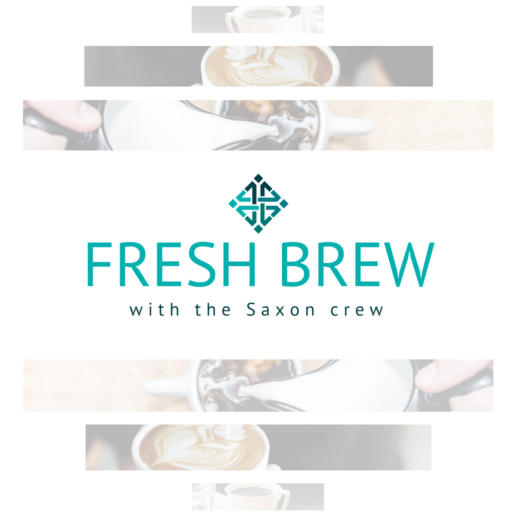Fresh Brew with Nat Gustafson
Welcome to our monthly segment, Fresh Brew, where we will be exploring the delicious coffees, teas, and snacks of some of our employees! You can look forward to our Fresh Brew blog post on the first Friday of every month.
“Always be prepared.”
Nat Gustafson is an Account Manager at Saxon Financial.
Nat began his career at Total Quality Logistics. For four months, he learned to control himself in hectic situations and to better manage his time. Most importantly, he taught himself how to effectively communicate with others in difficult situations.
In his free time, Nat enjoys snowboarding. When thinking about his greatest adventure, he remembers traveling around Italy. He lives by the catchphrase of, “Roll up your sleeves.”


Rhinegeist Truth
Nat enjoys a Rhinegeist Truth, an indian pale ale, from his favorite local spot, Mount Lookout Tavern on Linwood Avenue.

Chicken Wings
Nat enjoys sipping on his favorite brew while eating chicken wings from Mount Lookout Tavern.
Need a Morale Booster? Therapy Dogs Can Help
Work is stressful by itself, but with added layers of stress from having to process outside emotions and hardships, it becomes difficult to give the best service that is should be offered. Allowing a therapy dog in the workplace can help employees reduce stress, and become calmer throughout the day. Read this blog post to learn more about how therapy dogs in the workplace can be beneficial to the work environment.
The Evergreen Health services facility in Buffalo, N.Y., is buzzing with anticipation several days before Stella arrives. Some staff even seek out Matthew Sydor, the director of housing and retention services at the health care agency, days ahead of time to confirm her arrival. Others have requested a calendar invite from him so they can plan their day around her visit.
The middle-aged golden retriever is a certified therapy dog, and her visits are a hit with employees.
Therapy dogs are common in what Sydor describes as the "helping" fields. Bringing therapy dogs into any workplace, he says, is an opportunity to break up the day for employees and give them something to look forward to at no cost.
"At our agency we work with many people who have gone through traumatic experiences. All work is stressful, but layers of stress are added when you are helping others to process their own emotions and hardships," he explained. "The compounding stress makes it difficult to best serve our patients at a high level. Having a therapy dog in the building helps staff to participate in a self-care activity."
Stella's owner, Krista Vince Garland, Ph.D., is an associate professor of exceptional learning at Buffalo State College. The pair specializes in animal-assisted interventions in educational settings but are receiving an increasing number of requests to visit local workplaces.
"Everyone who visits Stella has the same comments: 'I feel so much better. She's brightened my day,' " Vince Garland said. "Aetna also did a study in 2017 that shows tremendous promise on the benefits of therapy dogs in the workplace. Employee sick days were down, morale was up and interactions among co-workers increased."
Having dogs in the workplace isn't a new concept, but it's a concept that hasn't been widely embraced. Only about 11 percent of companies in the United States allow pets in the office, according to the Society for Human Resource Management Employee Benefits 2019 survey.
Paul LeBlanc is the founder and CEO of Zogics, a Massachusetts-based fitness, cleaning and body care company. S'Bu, a Rhodesian Ridgeback, was LeBlanc's first employee.
"When you look at [Inc. magazine's] list of best places to work, 47 percent of those companies allow dogs in the office," he said. "Studies have shown that petting a dog for five to 10 minutes causes a reduction of blood pressure and the dogs have calming effects on people."
But not all employers are ready to go "all-in" like Zogics. For these workplaces, therapy dogs are a viable alternative. Sydor and Vince Garland share insight into what has made their partnership successful and offer tips any business can use.
Communicate. No one likes a surprise, even if it's a friendly four-legged canine. Talk with staff first to address any questions or concerns. Arrange a quick meet-and-greet to give the dog a chance to get used to the environment before interacting with employees.
"This also gives the administrator a chance to touch the dog and make sure it is clean and well-groomed. Therapy dogs are required to have a bath within 24 hours of any visit," Vince Garland said.
Distributing a fact sheet helps with the introduction of a therapy team. Once a visit is established, send a reminder a day prior.
"I suggest telling your staff why you're bringing therapy dogs in and advertise it as much as possible to employees," Sydor said.
Verify credentials. Ask about the team's training. Certifications are not required of service dogs and emotional support dogs. However, therapy dogs must complete training. Stella is an American Kennel Club (AKC) Good Citizen and has earned certifications through Therapy Dogs International and the SPCA Erie County Paws for Love.
"There's a lot of fake information out there. If someone is shy about sharing that information, that's a clue that more discussion is needed," Vince Garland said.
Sydor added, "We found Krista and Stella through Erie County SPCA's Paws for Love, and it has been a great partnership. They hold liability insurance for any damage that may occur. All dogs are well-trained, and the handlers are consistent with how they conduct their work."
Acknowledge cultural differences. "Care must be taken to respect cultural sensitivities," Vince Garland said. "Some cultures regard dogs as unclean, others view dogs as nuisances, while others believe spirits may appear as animals."
Designate a point of contact. This person handles scheduling visits, interacting with the team, and confirming vaccinations and liability insurance. The ideal individual works well with people and is animal-friendly, according to Vince Garland.
Create a space for the team. Not everyone will embrace dogs. Designating space separate from the main workflow respects the space of those employees who choose not to interact with the dog.
"Evergreen has given us a room for visits," Vince Garland said. "By being out of the flow, we're able to meet with staff who are interested without making others feel uncomfortable."
SOURCE: Navarra, K. (13 January 2020) "Need a Morale Booster? Therapy Dogs Can Help" (Web Blog Post). Retrieved from https://www.shrm.org/resourcesandtools/hr-topics/benefits/pages/need-a-morale-booster-therapy-dogs-can-help.aspx
New employee retention tool has four legs and goes 'woof'
The term "a dog is a human's best friend" can get thrown around, but what if dogs lead to increased productivity and less stress? Read this blog post to learn how allowing dogs at work can benefit employee productivity.
There are so many reasons to allow dogs in the workplace, from increasing production and morale to decreasing absences.
And while financial institutions have not traditionally offered such an employee benefit, there are plenty of banks and fintechs that are leading the way in the industry.
For example, JPMorgan Chase not only allows dogs into its branches, but it also hands out dog treats. Wells Fargo is another company with a great pet policy. In fact, Wells Fargo has a host of dogs that have been part of various offices throughout the years.
Other companies are going the extra mile, and providing dog parks on-site or dedicated walking areas for their four-legged colleagues. The online small-business lender Kabbage is well known for its laid-back work culture, including casual dress code, beer on tap and a dog-friendly policy.
Perhaps one of the most pet-friendly companies is Redtail Technology, which is named after the founder Brian McLaughlin’s dog. Not only does the company encourage people to bring their dogs to work, it also has a dog park, and a Slack channel for employees to message each other when they’re about to take their dog out for a play.
Still skeptical about this approach? Here are five scientifically backed reasons that allowing dogs into the office can benefit employees.
First, allowing people to bring their pet along with them to work actually helps to decrease stress for not just them, but everyone in the workspace. Washington State University found that petting a dog for just 10 minutes can help to reduce stress.
Playing with or petting a dog can increase the levels of oxytocin, a stress-reducing hormone; and decrease the levels of cortisol, a stress hormone.
A team of researchers at Virginia Commonwealth University carried out a study that compared three groups of employees: those who brought their dogs to work, those who had dogs but left them at home those who didn’t own a dog. The lead of the study, Randolph Barker, said that "the differences in perceived stress between days the dog was present and absent were significant. The employees as a whole had higher job satisfaction than industry norms."
Second, when staff bring their dog to work, they will need regular walks throughout the day, which will encourage people to be active. Being physically active not only gives people the satisfaction that naturally comes with exercise, but it will also increases productivity.
Each time someone exercises, new mitochondria produce more energy known as ATP. This gives people more energy physically and for the brain, which boosts mental output and productivity.
Third, workplaces that allow dogs into their offices usually find that employees are more cooperative with each other, and that they have better working relationships. Dogs increase morale and bring a more fun and positive outlook to office life, which encourages people to be friendlier to each other.
Dogs are a common interest between many different people from all walks of life, so having some common ground can help people to connect. Central Michigan University found that when a dog is in the room with a group of people, they are more likely to trust each other and collaborate together effectively.
Fourth, actively encouraging staff to bring their pet to work will foster a really good relationship between employer and employee. It will help to make employees feel valued and increase the likelihood they'll stay long term at the company.
The more satisfied people feel in their job role, the less likely they are to search for work elsewhere, making employee retention rates higher, according to one study.
Fifth, allowing staff to bring their pet to work increases their job satisfaction and reduces stress, which in turn will mean that they are less likely to become ill and need time off work. This can have an added effect on other employees in the business too. With the positive, stress-reducing nature that dogs bring to an office, people will be less likely to take time off.
With such benefits already working for some financial companies, hopefully others will start to catch up with these pet-friendly policies soon.
SOURCE: Woods, T. (09 January 2020) "New employee retention tool has four legs and goes 'woof'" (Web Blog Post). Retrieved from https://www.benefitnews.com/opinion/pet-friendly-policies-as-employee-retention-tools
Managing the Social Butterfly in Your Office
Enjoying the work environment is important, but too much play and not enough work can cause conflict, distraction, and dissatisfaction. Research from the platform Udemy discovered that most employees like to work without distractions from their peers. Read this blog to learn how to manage the social butterfly in your workplace.
Although they might pretend to enjoy playing foosball, catching up on TV shows, and socializing in the office, most employees would prefer to just do their work without distractions, and keep their private lives private, according to new research from online learning platform Udemy. And it’s not just the “older” folks at the office. Udemy’s findings show that this wish is consistent among baby boomers, Gen X, millennials, and Gen Z alike.
So why aren’t more offices heads down and focused on work, if that’s what most of us want? The research shows that the more social minority tends to set the overall tone in the workplace. This difference in work style can cause interpersonal conflict, employee distraction, and dissatisfaction. While that might not sound like a big deal, unhappy, actively disengaged workers cost U.S. companies up to $550 billion per year.
Why we have trouble setting boundaries
Business leaders today are struggling to set boundaries for “appropriate” workplace behavior. Behavior that has traditionally been viewed as unprofessional — such as hugging, sharing deeply personal information, and using profanity — has become much more common.
Part of the problem is that managers often wrongly assume employees “just know” how to interact with each other at work. They don’t. This is partially due to changing employment trends, such as a decrease in entry-level positions, and fewer teens working summer jobs, which has resulted in less familiarity with workplace norms. Also, that old scapegoat, social media — and business messaging apps that mimic social media — may contribute to a perception that more informal communication styles are also OK at work. (Just do an internet search for “Slack etiquette”; the abundance of articles about how to communicate professionally indicate that this is a common challenge.)
Another factor contributing to why we have trouble with boundaries is a lack of self-awareness; that is, understanding how we come across to others. In fact, research shows that although 95% of people think they’re self-aware, only 10-15% actually are. When we’re not self-aware, we don’t realize that what we do, such as hanging around someone’s cubicle to chat, or using profanity, bothers or distracts others.
Despite this confluence of factors, many managers aren’t proactive about putting guidelines in place to set expectations of how employees should interact in a professional way. When there’s no clearly communicated norm about what constitutes “professional behavior” in the workplace — even if those norms are culturally or company specific — it’s difficult to call out if someone has crossed it.
Best practices for managing behavior and minimizing distractions
Defining which social behaviors are “too social” or distracting at work is not an exact science, and the right balance will be different in every workplace. However, in general, the Udemy survey found two distinct groups — across generations — with opinions around which behaviors were appropriate for the workplace. “Social butterfly” personalities were more likely to rate social behaviors, such as hugging, casual communication style, and gossiping more appropriate for work. “Worker bee” personalities, on the other hand, rated these same behaviors as less appropriate.
So how can a manager help the social and less social (at least at the office) work better together? Here are five best practices managers can implement to support change and open communication about expectations for interaction — and fewer distractions — at work.
Emphasize positive intent when giving feedback. When feedback is about something personal, like work style, rather than specific to task and performance outcomes, it can cause feelings of social rejection. Because most of us shy away from causing emotional distress in others, giving this sort of feedback is hard. A lens of “positive intent” can help you more positively frame feedback, for example to an employee who is extremely chatty, if you assume they are just behaving in a way that is natural for them, feels “right” to them, and is not intentionally trying to bother others. You might say something like: “I would like to give you some feedback about your communication style at work. You stop by my desk several times a day to talk to me about non-work topics, and it’s hard for me to stay focused on my work when you do that. To be clear, I feel confident that you’re not trying to bother me intentionally, and that you want to be friendly and inclusive. Did I get that right?”
Own the awkward. One way to initiate a discussion with employees about behavior that causes distraction or distress is to simply admit feeling uncomfortable: “This feels uncomfortable, but I wanted to talk about something that’s been on my mind and may not be on your radar.” Since you’re about to make the other person feel vulnerable, it can be effective to be a bit vulnerable yourself; for example: “It might sound silly to say ‘don’t hug me,’ but hugging my colleagues makes me uncomfortable — and affects my ability to maintain professional boundaries.”
Be specific. It’s important to articulate specifically and neutrally what the other person is doing that is affecting you or another member of the team. “You’re being too friendly at work” is an interpretation of behavior, not a behavior itself. Instead, try the more neutral: “I notice that on Mondays, you come into my office to tell me about your weekend without asking if I have a few minutes to chat. I’m usually trying to catch up on time-sensitive emails at that time. Would you be willing to ask if I have a few minutes free? I’d like to be able to give you my full attention — or let you know when I can give it to you.”
Encourage your employees to give each other feedback. The most effective way to change behavior is through feedback. However, most of us aren’t naturally great at giving or receiving it, so managers should practice and encourage a culture of regular feedback. Peer-to-peer feedback can be particularly impactful; research shows it can boost employee performance by as much as 14%. Furthermore, it’s a manager’s job to encourage employees to speak up to one another instead of complaining behind closed doors. And, managers should make an effort to recognize and reward those who give feedback well and consistently, as well as those who take the feedback without defensiveness.
Offer training. As mentioned above, more employees are coming on the job with little awareness about workplace norms around professional behavior. In addition, Gallup reports that only about 20% of managers have even basic people management skills. Fortunately, this soft skills gap can be filled with training in areas such as conflict management, effective communication, and emotional intelligence. To put training in place, incorporate specific trainings as part of new hire onboarding, and offer training courses as part of the performance evaluation outcomes for improvement.
Differences in work style can result in unwelcome distractions in the office. However, by supporting a culture of regular feedback, having brave, candid conversations, and providing training, the workplace can be more comfortable for everyone.
SOURCE: Riegel, D. (17 December 2019) "Managing the Social Butterfly in Your Office" (Web Blog Post). Retrieved from https://hbr.org/2019/12/managing-the-social-butterfly-in-your-office
Fresh Brew with Scott Langhorne
Welcome to Fresh Brew, where we explore the delicious coffees, teas, and snacks of some of our employees! You can look forward to our Fresh Brew blog post on the first Friday of every month.
“Pay close attention to detail.”
Scott Langhorne is an Account Manager at Saxon.
Scott joined the team at Saxon Financial Services after working in customer service. His favorite catchphrase, a quote from the movie Friday Night Lights, is, “Clear eyes, full heart, can’t lose.”
Scott enjoys helping out his family and friends with any projects they need doing. He also enjoys traveling with his wife. His most memorable trip was when they traveled to Switzerland and Portugal.
In his free time, Scott enjoys playing golf during the warmer months. He also enjoys spending time with his wife and their dog, Bosley.


Bud Light
Scott enjoys drinking Bud Light. His favorite local spot to grab is favorite brew is wherever friends and family are.

Wings
Scott’s favorite snack to accompany his favorite brew are wings.
When productivity increases, so do wages
Although productivity is the baseline of wages, deviations do occur. Productivity and pay can diverge for multiple reasons that are not included in the standard economic model. Read this blog post to learn more about pay versus productivity.
“Workers are delivering more, and they’re getting a lot less,” argued former Vice President Joe Biden in a speech at the Brookings Institution this summer. “There’s no correlation now between productivity and wages.”
Senator Elizabeth Warren, a Democratic presidential rival, agrees. Her campaign website states that “wages have largely stagnated,” even though “worker productivity has risen steadily.”
The claim that productivity no longer drives wages is common enough on both the political left as well as the right. Proponents of this view argue that workers aren’t getting what they deserve based on their contributions to employers’ bottom lines.
Income inequality — the gap between the incomes of the rich and everyone else — supposedly demonstrates that the economy’s rewards are flowing, undeservedly, to those at the top. Populists take that conclusion even further, arguing that capitalism is fundamentally broken.
If that is what’s happening, it refutes textbook economics, which argues that wages are determined by productivity — by the amount of revenue workers generate for their employers. If a company paid a worker less than her productivity suggests she should be making, then she would go down the street and get a job that would pay her what she’s worth. Employers compete for workers, ensuring that workers’ wages are in line with their productivity.
This theory leaves out a lot, of course. Pay and productivity can diverge for any number of reasons not included in the standard economic model. Workers may not know how much revenue they create, or what other employment options are available to them. And changing jobs has its own costs, which in the real world gives employers some power over wages.
For critics of the current system, “some power” is a drastic understatement. In their telling, the decline of labor unions; erosion of the minimum wage; rise of non-compete and no-poaching agreements; inadequate enforcement of workplace standards and the like have dramatically reduced the bargaining power of workers. This has allowed businesses to drive down wages to the bare minimum job applicants and current workers will accept, pushing their pay below what their productivity suggests it should be.
Which view is correct? The latest piece of evidence on this question comes from Stanford University economist Edward P. Lazear, who analyzed data from advanced economies and confirms a strong link between pay and productivity.
Like several previous studies, Lazear’s research finds that low-, middle- and high-wage workers all benefit from growth in average productivity. This suggests that improvements in overall economic efficiency help all workers, not just the rich.
But Lazear argues, correctly, that a relevant issue is not whether workers benefit from changes in average productivity. Instead, if you want to know whether workers are being paid for their productivity, you should look at whether changes in the productivity of, say, low-wage workers affect the pay of that specific group.
It is infeasible to measure the productivity of individual workers. (How much revenue per hour of work do I generate for Bloomberg?) So Lazear examines productivity at the industry level, and compares industries that employ highly skilled workers with those that employ lesser-skilled ones.
Using data on the U.S. from 1989 through 2017, Lazear finds that productivity in industries dominated by higher-skilled workers increased by (roughly) 34 percent in that period. The wages of those workers grew by 26 percent. For industries requiring lesser skills, productivity increased by 20 percent, while wages grew by 24 percent.
In other words, pay increased faster than productivity in industries with lesser-skilled workers, and slower than productivity in industries with higher-skilled workers. Another striking implication of this finding is that “productivity inequality” — the gap in productivity between workers — may have grown faster than wage inequality over this period. While wage differences have increased over time, differences in productivity between groups of workers have increased even more.
The upshot: Slower wage growth for lesser-skilled workers is not prima facie evidence that employers have significant power over wages or that productivity doesn’t determine wages. Instead, Lazear concludes that productivity growth for high-skilled workers has increased rapidly enough (actually, more than enough) to account for growing inequality.
What caused this? Lazear points to two familiar explanations. Technological change disproportionately benefits the highly skilled, increasing their wages and productivity. And the globalization-led shift to a services economy has reduced the productivity of goods-producing, lesser-skilled workers.
Lazear also suggests that colleges may have improved more than high schools in their ability to impart skills to graduates. If so, industries dominated by college graduates would be expected to have had faster productivity growth over the last three decades. This would have caused both a wider dispersion in productivity across industries and in wages across groups of workers.
Such research doesn’t settle the debate, of course. Yet it does strengthen my view that wages are heavily influenced by market forces, even if they are not entirely determined by them. While productivity sets the baseline for wages, deviations from that baseline occur.
So contrary to what Biden, Warren and (many) others say, market forces, not power dynamics, are the principal driver of inequality.
This gets at the heart of the moral properties of the market economy. Capitalism produces unequal outcomes: The wages for some grow faster than for others. Those disparities are palatable if they are caused by differences in risk-taking, work effort and skills. They are tolerable if people are getting, in some sense, what they deserve. But if wages aren’t determined by productivity — if hard work doesn’t pay off and if workers aren’t receiving just returns — then something has gone badly wrong with the system.
Fortunately, the system doesn’t seem to be broken. It does need to be fine-tuned, however, with the goal of increasing the productivity of the lesser skilled. And we should be confident that if their productivity increases, so will their wages.
SOURCE: Bloomberg News (03 January 2020) "When productivity increases, so do wages" (Web Blog Post). Retrieved from https://www.employeebenefitadviser.com/articles/when-productivity-increases-so-do-wages
Reality check: The learning pro's primer on AR, VR tech
Virtual reality (VR) has created an opportunity to live in a realistic moment while also in a safe and controlled environment. Employers are now using this tool to train employees in a fun and authentic way. Read this blog post to learn how and what virtual reality is doing for employees.
Virtual reality and related technologies are gaining momentum in the employee learning field. Trainers love these tools for their ability to create an authentic learning experience in a safe, controlled environment and employees say they're on board, too.
But what exactly are these technologies? What do they do and how can you make use of them in your workplace? For many, understanding the tech is the first step toward implementation.
Alphabet soup
All together, these tools fall under the umbrella of XR — extended reality — according to Jack Makhlouf, Talespin's VP of sales and licensing, enterprise learning.
Within XR is VR and AR, virtual reality and augmented reality. To add to the confusion, AR is sometimes called MR, or mixed reality, Makhlouf told HR Dive in an email. Essentially, VR is a simulated experience that transports the user to a virtual environment that can be similar to or completely different from a real-world scenario. AR is an interactive experience where the objects that reside in the real world are enhanced by computer-generated information.
IRL application
VR and AR have many real-world applications, according to Ravin Jesuthasan, managing director, talent management at Willis Towers Watson. "VR and AR have gotten increasingly popular for training people on scenarios that don't occur often (e.g., a store manager being taught how to deal with an armed customer) and for training people on things that require significant practice (operating a complex piece of machinery)," he told HR Dive via email.
As a result, they're fast becoming a safety training must-have, especially for distributed workforces. These tools can be used to familiarize workers with a risky procedure or process before they attempt it in real life, Concept3D's CEO Gordon Boyes wrote to HR Dive. For location training, staff can learn safety procedures or the locations of exits, eyewash stations or fire extinguishers. "We use AR or mixed reality for remote locations," Boyes said, "and can overlay relevant data or information in its correct location without having someone needing to go to the remote site."
VR training scenarios also are particularly useful for practicing workplace conversations, Makhlouf noted. Workers can test run negotiations or customer interactions. "People generally don't get enough real-time practice engaging in difficult conversations so it takes much longer to build competency," he said; these tools can allow trainees to practice scenarios where soft skills are critical before being thrown into real-life situations.
Moreover, trainees are free to fail, get feedback, retry and improve with little judgment or consequence, Makhlouf said: "They are free to stretch their skills and gain a higher level of learning — that is the real power of this technology."
The ROI
While costly, Jesuthasan said, VR and AR have major benefits. For one, the speed of training on highly complex topics is unprecedented.
Additionally, the tech boosts knowledge retention because people are visual learners, Boyes said. "An employee's ability to learn and retain information is greatly enhanced with the addition of immersive media." The self-directed nature of the training can result in a cost savings, too, Boyes added.
XR training programs tend to be scalable as well, Makhlouf said, which can make it more cost-efficient. But ultimately, employees seem to like them, and that's perhaps the best return on investment an employer could hope for. After all, if you can't get employees to complete training, there's no ROI at all. "[W]e believe training should effective, cost-efficient, and measurable," Markhlouf said, "but most of all, fun.”
SOURCE: O'Donnell, R. (17 December 2019) "Reality check: The learning pro's primer on AR, VR tech" (Web Blog Post). Retrieved from https://www.hrdive.com/news/reality-check-the-learning-pros-primer-on-ar-vr-tech/568730/
Inviting Remote Workers to the Holiday Party
Are your employees working remotely? Owl Labs found that at least 62 percent of employees work remotely once a month, and 49 percent of those work remotely full-time. Further research from Buffer discovered that remote employees cite loneliness as their second-largest struggle. Read this blog post to learn more.
Text messaging-based personal shopping concierge service Jet black has 370 employees, two-thirds of whom work outside of its New York headquarters. When it comes time for its annual holiday party no one is left out, though. Instead, remote workers get their own take on the festivities so everyone feels like part of the team.
Jet black's holiday celebrations include a company-wide gift exchange, deliveries of restaurant gift cards to those who work the holidays, and a remote holiday meet-up. "We make a conscious effort not only to include but also engage our remote employees," explained Odette Lindheim, the company's director of people operations. "We get a room that's central to our remote workers, set up games and snacks, send them company swag, and put on holiday music. People are invited to come for an hour or all day. It gives our people working from home offices a way to get that office party feeling even if they don't normally go into an office."
'Tis the Season
Holiday parties have a firm foothold in corporate America. At the same time, remote work is way up. The 2019 "State of Remote Work Report" by Owl Labs found that 62 percent of employees worked remotely at least once a month; 49 percent of those respondents say they work remotely full-time. According to Buffer's "State of Remote Work 2019" report, remote workers also cite loneliness as the second-largest struggle they face.
Keeping these facts in mind, HR managers and those who are planning the company holiday party may want to make a more concerted effort to bring remote workers into planning parties and celebrating, says S. Chris Edmonds, president and CEO of The Purposeful Culture Group, a work culture consulting firm based in Conifer, Colo. They shouldn't feel isolated or alone during what is touted as the happiest time of the year.
"Keeping people connected and sharing information with each other is something companies must think about throughout the year. Sharing common experiences and giving employees the opportunity to have some fun around the holidays helps improve relationships and is immensely powerful," he said.
The most obvious way to accomplish this is to fly everyone in for whatever event you plan at the main office. This may not be the easiest option for those companies that have a significant number of remote employees, though, simply due to cost and logistics. For some companies—although flights, hotels, and meals add up—the extra cost and trouble can be worth it, says Cheryl Johnson, chief human resources officer at Chicago-based software company Paylocity. Johnson, for example, piggybacks her own 150-person department's—half of whom are remote—holiday celebration with a staff-wide meeting and professional development program.
"As a company, when we look at employee experience, we believe that everything should be equitable," Johnson said. "We budget a certain amount per head and plan events that cater to every group."
There's a similar plan in place at the Ken Blanchard Companies, although inclusion takes a more virtual bent. About half of the company's 300 employees work remotely, with office locations scattered across the U.S., France, the United Kingdom, and Asia. In order to show appreciation and create team bonding, the company holds an annual Shop and Share program, sending out $50 to every employee and asking them to do a show-and-tell with what they buy. Originally, the company flew everyone in to the main Escondito, Calif., headquarters, but today that's changed.
"Now we start the Shop and Share program with an all-company meeting that everyone participates in, either in the headquarters or through a live broadcast. After the meeting and at an appointed hour, everyone goes out shopping for something for themselves," said Shirley Bullard, the company's chief administrative officer and vice president of HR. "Then we all come back and share our purchases with each other. As we have become more decentralized and people move into the field, [the program] becomes more and more important because it helps us stay connected."
Bullard says it's just one of many strategies that the company employs to help people feel engaged. Organizations that can't fly everyone in can try holding a similar virtual holiday celebration, using Facebook, Google Hangouts or Zoom so employees can interact and get that crucial face-to-face contact that helps bring people together.
It's also important that all employees get the same holiday perks whether they make it to a holiday party or not. At Paylocity, for instance, remote employees who don't live close enough to one of the three office-hosted parties can choose from three end-of-year gifts. This year, those employees will also get in on their annual party raffles, too. "We created a virtual raffle. In order to get that virtual ticket we want them to answer a survey question: What are you grateful for? It's new this year, and it's about giving people one more way to feel connected," said Johnson, who says it's just another piece of the company's overall remote employee inclusion program.
This kind of commitment is important, say experts. While it's nice that remote employees feel included during December, such efforts should be part of a larger, year-long program. "It's not just about the holidays," Bullard said. "It's about sharing life events throughout the year so [the employee] feels like a part of the organization no matter what. That's why anything we offer [at the main headquarters], we are always asking, 'How do we bring it to our remote staff?'"
SOURCE: Bannan, K. (12 December 2019) "Inviting Remote Workers to the Holiday Party–Remote workers should get to celebrate with co-workers—in person or virtually" (Web Blog Post). Retrieved from https://www.shrm.org/ResourcesAndTools/hr-topics/employee-relations/Pages/Inviting-Everyone-to-the-Holiday-Party.aspx
Tech tools underused for workplace engagement: survey
Did you know: Only 45 percent of employers use technology to improve employee engagement, according to a survey of HR professionals. Read the following blog post to learn more about using technology to enhance workplace engagement.
Just 45% of employers are using technology to improve employee engagement, according to a new survey of thousands of HR professionals in organizations of varying sizes.
The research finding comes from the Next Concept Human Resource Association (NCHRA) and Waggl, a real-time engagement platform. HR tech industry professionals weighed in on the topic at the HR TechXpo 2019 and others as part of the latest “Voice of the Workplace” pulse survey.
Of those respondents, 92% said they would like to create a strong internal culture that affects results. In addition, 81% believed that investing in people-focused programs and skills such as onboarding, performance and employee engagement would help increase revenues and profit margins.
Lisa Hickey, VP of professional development at NCHRA, was “a bit surprised” that only 45% of her group’s members reported that their organizations are using technology to improve employee engagement in the face of business volatility and a tight labor market.
NCHRA and Waggl, both based in the San Francisco Bay Area, also distilled into a ranked list crowdsourced responses to a survey question about social media and gamification platforms as tools to increase employee engagement.
Several caveats were expressed. One HR leader, for example, cautioned that they need to be tied to the type of company and demographics, as well as the extent to which employees are willing to embrace change. Another respondent said it’s important that gamification not be “viewed as a nuisance and a distraction from accomplishing job tasks.”
The bottom line is that giving employees an opportunity to help shape their organization’s culture, experience, vision and execution enables them to “feel more connected to the workplace and empowered to drive change,” according to Alex Kinnebrew, chief marketing officer and head of growth strategy for Waggl.
Benefit brokers and advisers can play a critical role in helping their employer clients bridge the technology gap when it comes to improving employee engagement, Hickey believes. “From designing an offering that represents company goals to securing the best technology to administer the program, brokers are guiding you every step of the way and also helping utilize technology beyond benefits administration that delivers more services and solutions for the company,” she says.
Founded in 1960, NCHRA is the nation’s second-largest HR association — serving more than 30,000 professionals in 23 states and several countries and showcasing more than 100 annual educational events.
Waggl’s Employee Voice platform examines critical business topics that include culture, experience, vision and execution. The company’s management team includes executives from Glassdoor, SuccessFactors and Coupa. Customers include Paychex, eBay, City Electric Supply, UCHealth, American Public Media and Freddie Mac.
SOURCE: Shutan, B. (4 December 2019) "Tech tools underused for workplace engagement: survey" (Web Blog Post). Retrieved from https://www.benefitnews.com/news/tech-tools-underused-for-workplace-engagement-survey
Why employers should consider adding volunteer time off benefits
Employers are being pushed to become savvier with social responsibility causes and their benefit offerings with the strong job market. This is giving rise to volunteer time off benefits. Read this blog post from Employee Benefits News for more on why employers should consider adding volunteer time off benefits.
The strong job market is pushing employers to become more savvy about socially responsible causes. This is giving rise to volunteer time off benefits as one popular strategy for employers seeking unique ways to attract and retain talent.
Indeed, 65% of companies offered paid time volunteer programs in 2018, according to data from the organization Chief Executives for Corporate Purpose, which looks to help companies transform their social strategy. That figure represents a 4% rise from 2017.
Organizations that offer employees paid days off to volunteer their time and support the nonprofit causes they care about are going to be more attractive to job seekers.
“Offering VTO as a benefit for employees is one of the best ways to engage employees with their local communities through volunteering and donations,” says Jeff Fraley, vice president of corporate engagement at United Way of the National Capital Area, an organization that provides relief of social problems affecting the community. “It encourages employees to participate in social good and helps to foster meaningful relationships within a community and the company itself.”
About 75% of millennials expect their employer to participate in social good, either with donations or through volunteering, according to a Glassdoor survey. Additionally, 51% of workers expect their employers to allocate work time and resources for their employees to volunteer for social causes.
United Way took a look at VTO benefits across the country in an effort to better understand these programs from an employer/employee perspective. The survey looked at the demographics of 49 large U.S. companies that offer VTO in order to get a sense of the types of workplaces offering this benefit. What it found was that the majority of companies that offer VTO are headquartered in New York, and in or around Silicon Valley.
Additionally, of the 49 companies studied, 12 were in the professional services industry, 12 were in the information technology industry, and nine companies were in the financial services and insurance industries. The survey also uncovered that the maximum number of volunteer hours offered per year to each employee is 20 hours, which amounts to about two and a half days of volunteer time off.
If the company with the largest revenue headquartered in each state implemented one day of VTO, the projection of total volunteer hours in the U.S. would be over 75 million hours, or nine million days, according to United Way. It would cost companies, on average, $27.4 million to implement an annual eight hour VTO policy.
“VTO is just one option if you're looking to expand your impact in the community,” Fraley says. “An employer can also sponsor a nonprofit, match employee donations, or other philanthropic initiatives. What’s important is to think about some sort of incorporation of corporate social responsibility as we're seeing that it's an increasingly important criterion of employers for millennials.”
SOURCE: Schiavo, A. (2 December 2019) "Why employers should consider adding volunteer time off benefits" (Web Blog Post). Retrieved from https://www.benefitnews.com/news/why-employers-should-consider-adding-volunteer-time-off-benefits













